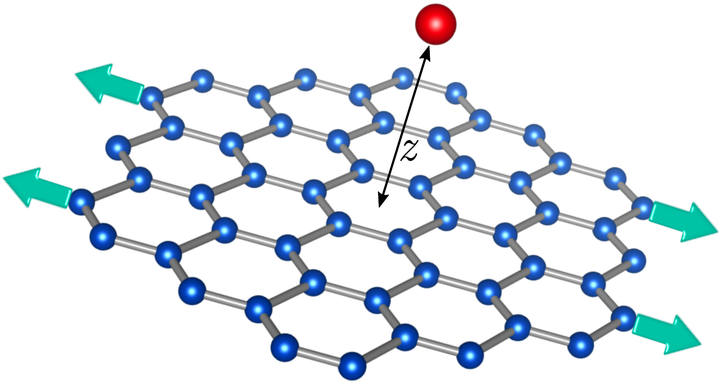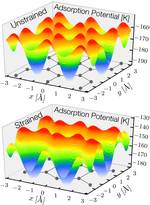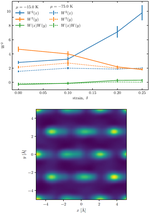Strain dependence of the potential interaction of adsorbed adatoms on deformed
two-dimensional materials offers exciting opportunities to study exotic
superfluid phases. I will study how adsorbed phases can be manipulated via
mechanical or chemical strain. Calculations in the continuum description using
random phase approximation for He at long distances from uniaxially strained
graphene can be matched using a new parameterization process.
Effective models mirror the close
distance physics found using density functional theory, where the adsorption
potential minima is pushed to higher distances above the deformed graphene sheet.
The enticing possibility of an anisotropic superfluid emerges as strain causes
channels in the potential well to open between adsorption sites allowing adatoms
to spatially delocalize. Other strain geometries could lead to even more quantum
phase transitions. The tuning of the adsorption properties of two-dimensional
materials paves the way to answering unsolved questions in quantum materials.
Could engineered strain geometries provide a tractable approach to a theoretical
description of the elusive two-dimensional supersolid phase (recently proposed) for the helium monolayer? Preliminary results using large
scale quantum Monte Carlo simulations indicate interesting behavior in the
appropriate regime.
 Anisotropic Quantum Liquids Uniaxially strain may allow for spatial delocalization of adsorbed adatoms.
Anisotropic Quantum Liquids Uniaxially strain may allow for spatial delocalization of adsorbed adatoms.
